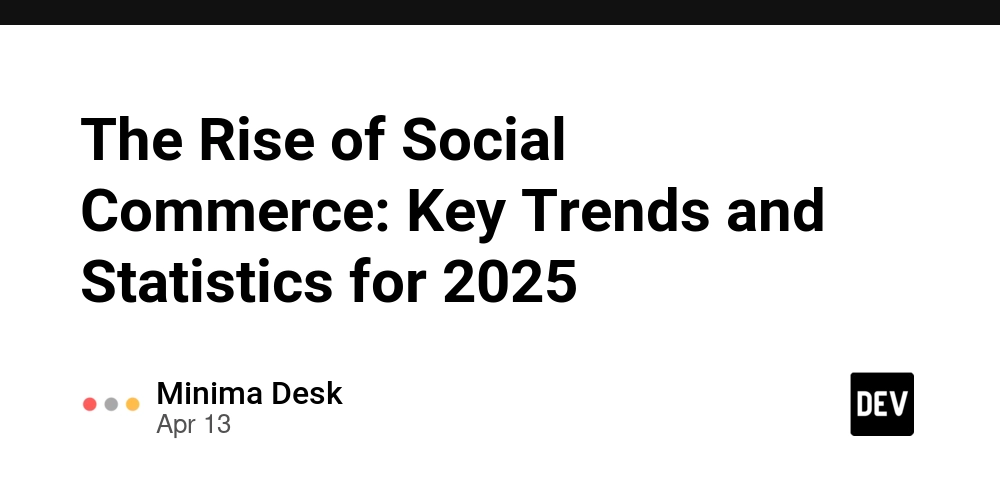The State of AI in 2025: Key Takeaways from Stanford’s Latest AI Index Report
Artificial intelligence (AI) continues to redefine various sectors of society, from healthcare and education to business and daily life. As this technology evolves, understanding its current state and future trends becomes increasingly important. The Stanford Institute for Human-Centered AI (HAI) has been tracking AI's growth and challenges through its annual AI Index Report, offering a […] The post The State of AI in 2025: Key Takeaways from Stanford’s Latest AI Index Report appeared first on Unite.AI.


Artificial intelligence (AI) continues to redefine various sectors of society, from healthcare and education to business and daily life. As this technology evolves, understanding its current state and future trends becomes increasingly important. The Stanford Institute for Human-Centered AI (HAI) has been tracking AI's growth and challenges through its annual AI Index Report, offering a comprehensive and data-driven overview. In its eighth edition for 2025, the report provides critical insights into the rapid advancements in AI, including breakthroughs in research, expanding real-world applications, and the growing global competition in AI development. It also highlights the ongoing challenges related to governance, ethics, and sustainability that need to be addressed as AI becomes an integral part of our lives. This article will explore the key takeaways from the 2025 AI Index Report, shedding light on AI's impact, current limitations, and the path forward.
AI Research and Technical Progress
The report highlights that AI has made extraordinary technical strides in performance and capability over the past year. For instance, models have achieved a performance increase of up to 67% in newly introduced benchmarks like MMLU, GPQA, and SWE-bench. Not only are generative models producing high-quality video content, but AI coding assistants have also begun outperforming human programmers in certain tasks.
Another trend highlighted in the report is the growing competition between open-source and closed proprietary AI models. In 2024, open-source models improved rapidly, narrowing the performance gap with proprietary models. This development has made advanced AI more accessible, with open models now nearly matching the performance of closed ones. Most new AI models are now being developed in industry labs, reflecting the increasing influence of companies in shaping the AI field. However, academic institutions still play a crucial role in foundational research.
The global competition in AI research is also intensifying. While the U.S. continues to lead in developing top-tier models with 40 models in 2024, China has made significant strides in closing the gap, producing 15 frontier models. This has intensified the AI innovation race, as both countries, along with others, are now competing to offer better AI capabilities.
Despite these advances, AI still faces challenges in complex reasoning. While AI can excel at pattern recognition, it struggles with tasks that require deep logical reasoning and multi-step processes. This limitation is particularly concerning in high-stakes applications that demand guaranteed precision.
AI in Scientific Discovery
The report also highlights that AI is playing an increasingly crucial role in scientific research. For example, it notes how systems like AlphaFold 3 and ESM-3 have made breakthrough advancements in protein structure prediction and models like GNoME discovers stable crystals for robotics and semiconductor manufacturing. The report also mentions AI's vital contributions in areas like wildfire prediction and space exploration, demonstrating its potential to solve complex global challenges. These advancements have been recognized at the highest levels, with Nobel Prizes awarded for AI-related work in protein folding and deep neural networks.
Widespread AI Adoption and Applications
The report acknowledges that AI is no longer limited to research labs and has widely integrated into everyday life, with applications spanning various industries. For example, it highlights the widespread use of AI-powered medical devices, noting that the U.S. FDA approved 223 AI-based medical devices in 2023 alone. Additionally, the report emphasizes the growing adoption of autonomous vehicles, with Waymo recording over 150,000 driverless rides weekly in the U.S., while Baidu’s Apollo Go fleet offers budget-friendly services across multiple cities in China.
The report highlights the growing impact of AI on the economy. It notes that companies are making significant investments in AI, with private funding hitting record levels. In 2024, U.S. companies invested $109.1 billion in AI, far surpassing other countries, such as China, which invested $9.3 billion, and the U.K., with $4.5 billion. This investment has accelerated AI adoption across various industries, including supply chain optimization and customer service automation. Early adopters are already experiencing productivity improvements, highlighting AI's potential to revolutionize business operations.
Efficiency, Energy, and Environmental Impact
The report notes that the advances in algorithms and hardware have significantly reduced the cost of operating AI models. For example, running models like GPT-3.5 is now 280 times cheaper than it was in 2022. This reduction in cost has made AI more accessible to startups and smaller organizations. Additionally, the report highlights ongoing environmental concerns. However, the report highlights that training large AI models still require substantial computational power, which increases the carbon footprint. For instance, it reports that training GPT-4 emitted over 5,000 tons of CO₂. While advancements in energy efficiency have been made, the expanding scale of AI models continues to raise environmental concerns. This underscores the need for tech companies to explore and adopt cleaner energy sources to mitigate the environmental impact of AI development.
Governance, Policy, and Responsible AI
The report indicates that as AI's influence expands, governments are intensifying their efforts to regulate its development. For example, the U.S. introduced 59 AI-related regulations in 2024, signaling a significant shift toward greater oversight of the technology. Meanwhile, countries like Canada, China, and Saudi Arabia have announced major investments in AI, recognizing its strategic importance for future competitiveness.
The report also highlights that international organizations like the OECD, the EU, and the UN are working on frameworks for AI governance. These efforts aim to ensure transparency, fairness, and accountability in AI systems. However, the report highlights that the Responsible AI (RAI) ecosystem is still developing, with a rise in AI-related incidents emphasizing the need for improved safety measures.
AI Education and Workforce Development
The report highlights the global expansion of AI education, with more countries integrating AI and computer science into their curricula. However, it also points out ongoing disparities in AI education, especially in less-developed regions. In the U.S., while interest in AI education is growing, challenges persist in teacher training and resources. Ensuring inclusive and equitable access to AI education is essential for building a diverse talent pipeline.
The report also notes a significant increase in the number of students earning AI-related degrees, particularly at the master’s level. This surge reflects growing interest in the field, driven by breakthroughs in AI technology and its widespread adoption across industries.
Public Sentiment: Optimism and Concerns
The report indicates that public opinion on AI is cautiously optimistic. While a majority of people globally view AI positively, concerns about ethics, safety, and job displacement remain. Trust in AI companies to handle personal data responsibly has declined, and skepticism about AI’s fairness and bias continues. However, there is strong public support for regulating AI, with many advocating for data privacy protections and greater transparency in AI decision-making.
In terms of job impact, while many workers acknowledge that AI will change their roles, most do not expect to be replaced by AI. Instead, they anticipate AI will alter how they work, automating certain tasks and requiring new skills.
The Bottom Line
The AI Index Report 2025 provides a comprehensive overview of the rapid progress and challenges in the AI field. AI is advancing at an unprecedented pace, with groundbreaking research, widespread adoption, and increasing integration into everyday life. However, the field must address critical issues around governance, ethics, and sustainability to ensure AI benefits society.
As we move further into 2025, the future of AI will depend on how effectively we address these challenges. Collaboration between technologists, policymakers, and educators will be key to ensuring that AI’s potential is utilized responsibly and equitably. While the future of AI holds immense promise, it will require careful management to ensure it benefits the greater good.
The post The State of AI in 2025: Key Takeaways from Stanford’s Latest AI Index Report appeared first on Unite.AI.









































































































































































![[The AI Show Episode 143]: ChatGPT Revenue Surge, New AGI Timelines, Amazon’s AI Agent, Claude for Education, Model Context Protocol & LLMs Pass the Turing Test](https://www.marketingaiinstitute.com/hubfs/ep%20143%20cover.png)





























































































































![From Accountant to Data Engineer with Alyson La [Podcast #168]](https://cdn.hashnode.com/res/hashnode/image/upload/v1744420903260/fae4b593-d653-41eb-b70b-031591aa2f35.png?#)




































































































.png?#)













































































































































![Apple Watch SE 2 On Sale for Just $169.97 [Deal]](https://www.iclarified.com/images/news/96996/96996/96996-640.jpg)

![Apple Posts Full First Episode of 'Your Friends & Neighbors' on YouTube [Video]](https://www.iclarified.com/images/news/96990/96990/96990-640.jpg)






























































































































